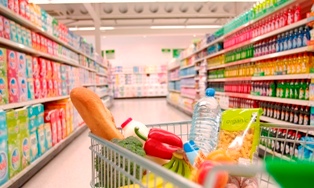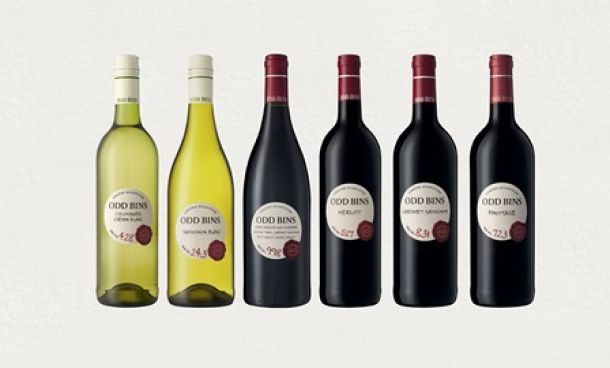Food items you are paying a lot more for in South Africa right now
Food prices in South Africa have continued to rise in 2021, with inflation on food and non-alcoholic beverages for July 2021 recorded at 6.7%.

Staff Writer | Business Tech
The latest annual baseline produced by the Bureau for Food and Agricultural Policy (BFAP) shows that the monthly cost of a basic food basket now sits at R2,932.
Consisting of a nutritionally balanced combination of 26 food items from all the food groups, the BFAP ‘thrifty healthy food basket’ is designed to feed a reference family of four – an adult male, an adult female, an older child, and a younger child – for a month.
 https://businesstech.co.za/news/wp-content/uploads/2021/08/BFAP-2-300x166.jpg 300w, https://businesstech.co.za/news/wp-content/uploads/2021/08/BFAP-2-1024x568.jpg 1024w, https://businesstech.co.za/news/wp-content/uploads/2021/08/BFAP-2-768x426.jpg 768w" alt="" width="1091" height="605" class="size-full wp-image-514536 aligncenter lazyloaded" style="border: 0px; vertical-align: middle; max-width: 100%; transition: opacity 0.3s ease 0s; clear: both; opacity: 1; height: auto; margin: 0px auto; display: block; backface-visibility: hidden;" data-aspectratio="1091/605" data-src="https://businesstech.co.za/news/wp-content/uploads/2021/08/BFAP-2.jpg" data-srcset="https://businesstech.co.za/news/wp-content/uploads/2021/08/BFAP-2.jpg 1091w, https://businesstech.co.za/news/wp-content/uploads/2021/08/BFAP-2-300x166.jpg 300w, https://businesstech.co.za/news/wp-content/uploads/2021/08/BFAP-2-1024x568.jpg 1024w, https://businesstech.co.za/news/wp-content/uploads/2021/08/BFAP-2-768x426.jpg 768w" />
https://businesstech.co.za/news/wp-content/uploads/2021/08/BFAP-2-300x166.jpg 300w, https://businesstech.co.za/news/wp-content/uploads/2021/08/BFAP-2-1024x568.jpg 1024w, https://businesstech.co.za/news/wp-content/uploads/2021/08/BFAP-2-768x426.jpg 768w" alt="" width="1091" height="605" class="size-full wp-image-514536 aligncenter lazyloaded" style="border: 0px; vertical-align: middle; max-width: 100%; transition: opacity 0.3s ease 0s; clear: both; opacity: 1; height: auto; margin: 0px auto; display: block; backface-visibility: hidden;" data-aspectratio="1091/605" data-src="https://businesstech.co.za/news/wp-content/uploads/2021/08/BFAP-2.jpg" data-srcset="https://businesstech.co.za/news/wp-content/uploads/2021/08/BFAP-2.jpg 1091w, https://businesstech.co.za/news/wp-content/uploads/2021/08/BFAP-2-300x166.jpg 300w, https://businesstech.co.za/news/wp-content/uploads/2021/08/BFAP-2-1024x568.jpg 1024w, https://businesstech.co.za/news/wp-content/uploads/2021/08/BFAP-2-768x426.jpg 768w" />
Month-on-month this basket has increased by R17, while year-on-year the basket’s price has increased by R119.
“We expect that food inflation will decline over the coming months as base effects ease and other key drivers such as the oil price ease off recent highs,” the BFAP said.
“The effect of the spread in the delta variant of the Covid-19 virus is expected to retard global recovery, which will probably spill over into global and local food and commodity prices.”
 https://businesstech.co.za/news/wp-content/uploads/2021/08/BFAP-300x186.jpg 300w, https://businesstech.co.za/news/wp-content/uploads/2021/08/BFAP-1024x633.jpg 1024w, https://businesstech.co.za/news/wp-content/uploads/2021/08/BFAP-768x475.jpg 768w" alt="" width="1090" height="674" class="size-full wp-image-514530 aligncenter lazyloaded" style="border: 0px; vertical-align: middle; max-width: 100%; transition: opacity 0.3s ease 0s; clear: both; opacity: 1; height: auto; margin: 0px auto; display: block; backface-visibility: hidden;" data-aspectratio="1090/674" data-src="https://businesstech.co.za/news/wp-content/uploads/2021/08/BFAP.jpg" data-srcset="https://businesstech.co.za/news/wp-content/uploads/2021/08/BFAP.jpg 1090w, https://businesstech.co.za/news/wp-content/uploads/2021/08/BFAP-300x186.jpg 300w, https://businesstech.co.za/news/wp-content/uploads/2021/08/BFAP-1024x633.jpg 1024w, https://businesstech.co.za/news/wp-content/uploads/2021/08/BFAP-768x475.jpg 768w" />
https://businesstech.co.za/news/wp-content/uploads/2021/08/BFAP-300x186.jpg 300w, https://businesstech.co.za/news/wp-content/uploads/2021/08/BFAP-1024x633.jpg 1024w, https://businesstech.co.za/news/wp-content/uploads/2021/08/BFAP-768x475.jpg 768w" alt="" width="1090" height="674" class="size-full wp-image-514530 aligncenter lazyloaded" style="border: 0px; vertical-align: middle; max-width: 100%; transition: opacity 0.3s ease 0s; clear: both; opacity: 1; height: auto; margin: 0px auto; display: block; backface-visibility: hidden;" data-aspectratio="1090/674" data-src="https://businesstech.co.za/news/wp-content/uploads/2021/08/BFAP.jpg" data-srcset="https://businesstech.co.za/news/wp-content/uploads/2021/08/BFAP.jpg 1090w, https://businesstech.co.za/news/wp-content/uploads/2021/08/BFAP-300x186.jpg 300w, https://businesstech.co.za/news/wp-content/uploads/2021/08/BFAP-1024x633.jpg 1024w, https://businesstech.co.za/news/wp-content/uploads/2021/08/BFAP-768x475.jpg 768w" />
Meat
The key driver of inflation in July was meat, which recorded a year-on-year price increase of 9.4%.
Some consumer resistance to high prices, especially in red meat, has resulted in price increases losing momentum but prices are still substantially higher compared to July 2020, the BFAP said.
“As the base effect of low meat prices in 2020 fades, inflation in meat prices is also expected to ease with monthly price dynamics suggesting that the price run, apparent since mid-2020, might be at an end.
“The exception to this is poultry prices which could remain firm on a weaker exchange rate and high global prices.”
High global prices of poultry are mainly due to the recovery in demand for chicken, particularly in the hospitality and food service sectors, combined with supply disruptions which affected breeding flocks in key producing counties and an extended period of high feed prices, the bureau said.
“Other sources of protein such as milk, eggs and cheese also recorded strong price growth on the back of increased global prices and input costs over the past year.”
Vegetables
Vegetable prices are 4.7% higher compared to July 2020 but 1% lower compared to June 2021 as the effects of the excessive rain in the first months of 2021 starts to ease and the quality of products and volumes recover, the BFA said.
“It is expected that the cold winter combined with frost in some regions could result in higher vegetable prices, especially in potatoes, over the coming months.”
Oil and fats
Inflationary effects in oils and fats were recorded at 22.4% for July. Here multiple global factors have contributed to a price surge that lasted several months, the BFAP said.
“This includes increased demand for commodities used for bio-fuels which supported soybean prices, supply disruptions related to labour in palm oil markets, and dry conditions in key sunflower producing regions.
“The combined effect of these factors continues to keep prices at elevated levels.”
News Category
- International retailers
- On the move
- Awards and achievements
- Legislation
- Wine and liquor
- Africa
- Going green
- Supplier news
- Research tools
- Retailer trading results
- Supply chain
- Innovation and technology
- Economic factors
- Crime and security
- Store Openings
- Marketing and Promotions
- Social Responsibility
- Brand Press Office
Related Articles

Makro secures exclusive rights to SA’s most sou...

Checkers adds 41 new wines to Odd Bins range

With petrol at almost R20 a litre, food prices ...

Petrol price shocker for South Africa


